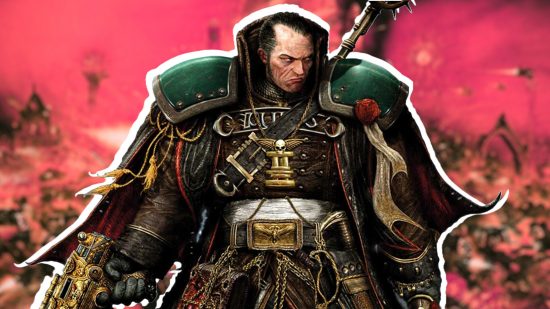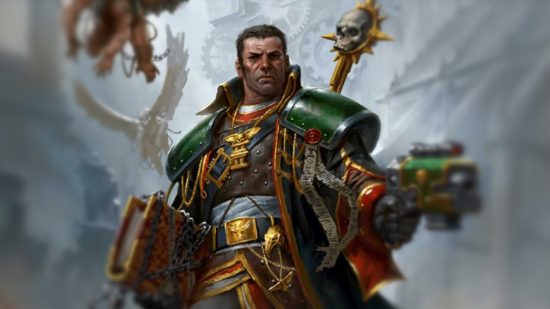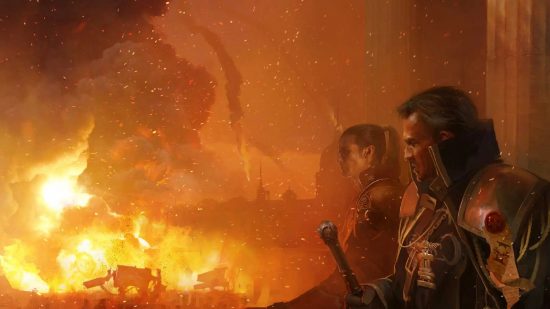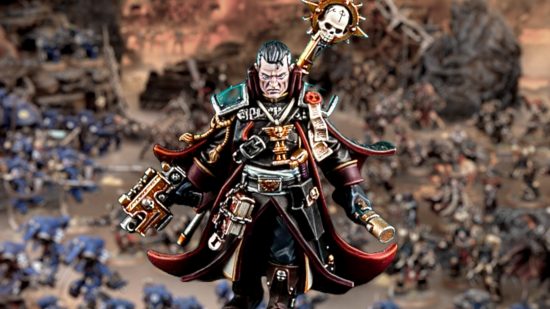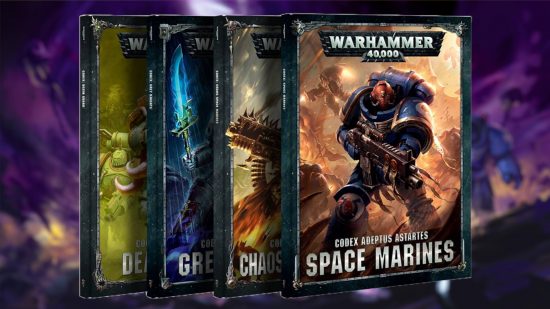For seasoned veterans, the expansive scope of Warhammer 40k is what keeps the universe so magnetic. It never stops growing, like a living, breathing organism fuelled by the imagination of hundreds of fiercely talented model designers, authors, illustrators, narrative designers, and countless others.
Inevitably, this ever-shifting tapestry of rules, models, and games is also what makes the franchise so inaccessible to newcomers. There’s just so much of it.
If you’ve ever tried to convince a friend or family member to give Warhammer 40k a chance, you’re asking them to invest a potentially endless well of money, time, and patience in preparation to play a miniature wargame they might not even enjoy – all while attempting to orient themselves within a tidal wave of dauntingly complex lore. That’s before they’ve even gotten to the rules.
Understandably, it’s a significant enough barrier to scare off even the keenest of prospective hobbyists. But it doesn’t have to be that way. The truth is that the most accessible gateway to Warhammer 40k is found in the least likely of places: it’s the books, you guys.
This is very unusual. In other comparably-scaled franchises (Star Wars and Star Trek both come to mind) the expanded lore found in novels is rarified nerdy esoterica, consumed almost exclusively by the only most devout enthusiasts. You’d be wildly ambitious to use Timothy Zahn’s Star Wars novel Heir to the Empire as your introduction to the franchise or to try to get into Star Trek through Peter David’s Imzadi. The opposite is true for Warhammer 40k books.
Pick up the first 40k novel in a trilogy or series, and you’ll find yourself at the start of a sci-fi adventure alongside freshly introduced characters, grappling with a dark but thrilling dilemma. Yes, you’ll end up meeting the various Warhammer 40k factions and absorbing lore as you go – but you don’t need to know it already. In most instances, the fact that these stories are set in the world of 40k is almost incidental.
The waning might of the Imperium of Man; the threats posed by 40k Chaos forces and the hell-dimension they call home; the menagerie of alien – a.k.a. Xenos – creatures in the galaxy; these all add background texture and flavor, but a pre-existing understanding of them is not required.
This is especially true for Dan Abnett’s celebrated Eisenhorn series. Abnett is one of the seminal authors of Games Workshop’s Black Library publishing house, and it’s impossible to overstate the extent to which his work has broadened and deepened 40k lore, widening the scope of stories that can be told in it. Eisenhorn is his Magnum Opus.
Following the titular Inquisitor (read: secret police detective) Gregor Eisenhorn, the novels’ overarching plot pulls in lots of 40k goodness, but ultimately they remain sci-fi crime stories.
They follow Eisenhorn and his ‘colleagues’ as they unravel the sprawling inter-planetary conspiracies of evil cultists, like the film Se7en in space.
Finish the original Eisenhorn trilogy, and you’re rewarded with an equally brilliant sequel trilogy following Eisenhorn’s protégé Gideon Ravenor. Finish that one, and you can dig into the second sequel series, an unfinished trilogy led by another compelling protagonist: the fantastic Beta Bequin. Emperor willing, Abnett will continue dropping bangers for many years to come.
Beginning with Eisenhorn (or any number of other similar novels) is the Warhammer equivalent of learning a language as a child — being surrounded by it, and immersed in it — as opposed to attempting the monumental task of starting from scratch as an adult.
Across these dark and twisted adventures, readers are given tantalizing glimpses into the wider universe: it’s something you learn about through osmosis by simply absorbing the atmosphere and fictional history, chunk by grim, dark, bite-size chunk. You can start Eisenhorn as a total Warhammer neophyte, but you’ll leave it with an intuitive understanding of 40k, and a desire for so much more.
Of course, this doesn’t make the subsequent models you’ll buy any cheaper. It doesn’t make trying to paint miniatures, or highlighting the intricate detail on a Boltgun, any easier. It doesn’t make the rules any simpler.
But it provides a vital foothold: something steady to clasp tightly to in order to avoid being buffeted around by the otherwise inaccessible nature of the franchise. It gives you, at least, a sense of what Warhammer 40k really is, and can be.
For a fraction of the cost of the brand new Warhammer 40k codex rulebook and miniatures required to play the tabletop game, you can hold in your hands a physical gateway to the Grim Darkness of the Far Future. Then, there’s no telling where your journey into the Warp will take you.
If you’ve been thinking – what is Warhammer 40k? – and this article inspires you to read up, but you haven’t the cash for a book just now, never fear – we’ve written hundreds of thousands of words explaining the Warhammer 40k universe right here on Wargamer Dot Com!
As a recognizable appetizer, try our complete guide to the Space Marines – and once you’ve met them, check out their many, many adversaries – from the Warp-tainted Chaos Space Marines, to the robotic space mummy Necrons, to the terrifying death-bug Tyranids.
